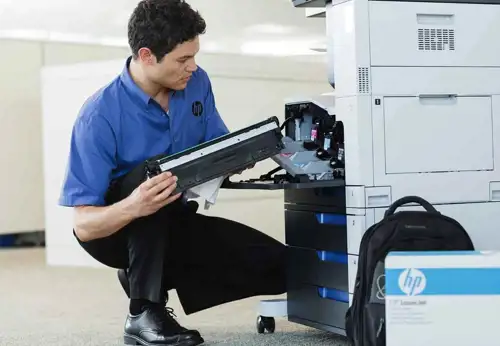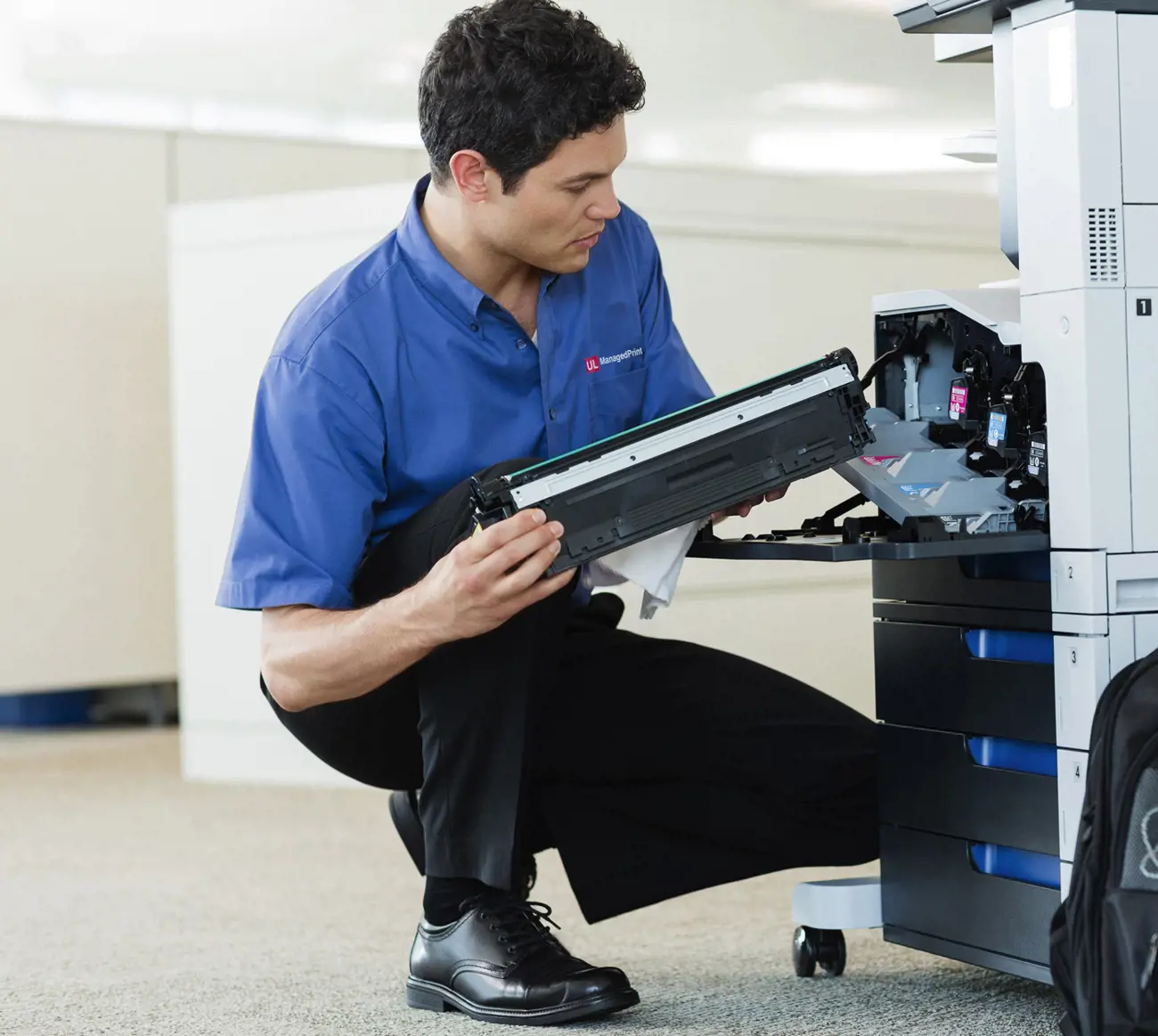How Can We Help?
Fleet management in unmanaged print environments is often reactive and costly. One department buys supplies from here, and another buys from there. Someone requests service (if it’s available) and replaces devices if that’s the only option. That ad hoc model creates huge, hidden expenses within an organization. Companies that don’t track or manage print costs can’t fix the daily inefficiencies and poor print habits chipping away at productivity and profitability.
We use tools to influence user behavior for cost objectives, such as selectively limiting color or oversize printing. Print-and-scan management platforms help our customers monitor costs to pinpoint inefficient and irresponsible printing. It’s the first step to print cost recovery and control.
People Also Ask...
- Functionally most organizations are not set up to manage both printers and copiers. Decisions about procurement of copiers, printers, supplies and service are typically made across departments with no single point of accountability.
- There is no system in place to measure printers and copiers. Inventory, costs and volumes are not consistently tracked.
- It’s complex, very complex. All the different models, supplies and simply understanding costs can quickly become overwhelming.
- Capture data to make informed decisions about reducing costs, increasing efficiencies
- Internal staff (IT, department personnel, procurement) focus on core competencies, not printers
- Cost reductions
Printing, scanning, and faxing are integral parts of every workday, and there is nothing more frustrating than waiting to get the copier or printer repaired before you can finish a project. Users want and need to confidentially print anywhere at any time, even at remote offices. This might seem at odds with an organization’s objective to also control printing. Most organizations have more printers than needed. But how do we reconcile the two – end users’ ready access to printing and controlling print costs? Fortunately, both can be accomplished by consolidating the fleet and implementing a Follow Me printing solution.
People Also Ask...
Removing or consolidating desktop printers can be painful to employees, but not if you provide additional benefits to end users, like Follow Me printing. Instead of printing to a specific device, users print to a shared print queue. The user can go to any Follow Me print-enabled device, authenticate (typically with a badge), select jobs to print, and then print.
- Print confidentially anywhere, anytime.
- Print from any enabled device, including mobile.
- Jobs print securely and don’t languish at print devices.
- Waste reduction as printing typically decreases at least 20%.
- Customize, automate user workflows, so scanned jobs route automatically.
- Software acquisition cost, which is often outweighed by reduction in printing.
- Lack of executive buy in
- Lack of executive leading by example
- Lack of a well-considered print policy
- Not implementing Follow Me printing solution with consolidation
- Poor communication to end users
CFOs have many responsibilities, but they are always interested in saving money and managing the organization's assets efficiently. With most organizations, printing is a good place to look for opportunities to improve. Why? There are a lot of inefficiencies in the printing process and environment, which includes copiers, printers, supplies, support, and payment. Too often, organizations only look at what is spent at the component level. Real savings are not so obvious and, in some cases, run contrary to industry norms. A well managed print program identifies these hidden areas continually. After all, printer fleet management is a process, not a project.
People Also Ask...
- Paying for full life of copier, but only using it for 50% of its actual life
- Paying for capabilities that are not needed
- Paying for prints that are never printed
- Leasing a new copier without looking at existing copier fleet
- Buying a low-cost printer thinking you are saving money
- Allowing a supply vendor to stock extra cartridges
- Printing pages that are never claimed
- Buying printers without looking at the current fleet
-
Implement a system to continually manage costs, volumes and inventory.
-
Consolidate and implement Follow Me printing in tandem.
-
Right-size the fleet.
-
Manage costly print devices like color and small personal printers.
-
Buy versus lease.
Security is a big topic these days in the IT world. Printers and multifunction printers (MFPs) are computers after all, just like PCs. They have a CPU, memory, and operating system. But there is one unique difference from other network components – the printed page. The most vulnerable pages are those sitting on the printer/MFP. The challenge for your IT staff is what we call the “3 Ds of Security”: Secure the Document; Secure the Device, and Secure the Data. A well managed print solution addresses the “3 Ds of Security” and simplifies the security management of your printer fleet.
People Also Ask...
-
Stolen and misplaced documents, scans and faxes stored on MFP/printer
-
Unauthorized changes to printer/MFP
-
Saved copies on the hard drive
End-of-Service Life (EOSL) is very important. Each manufacturer has an EOSL status, and what it involves varies by manufacturer. By and large, EOSL means two things. Parts are no longer made for the respective device, and the firmware is no longer updated. The latter is most critical because firmware updates protect the device.
The possible outcomes of ignoring firmware updates are serious. You could find scanning no longer works; printer quality is bad, or someone has hacked the network. We recommend a regular update schedule for many printer brands and models.
When your business buys a printer or copier, whose job is ongoing repair and maintenance? It’s the IT department’s responsibility in most cases. Now consider that question for a business with multiple locations and multiple printer and copier models. Clearly, it’s a big, complex responsibility, and it’s a drain on your IT resources. We solve that problem with a network of qualified, local technicians for every printer issue or copier repair at every office. You work with one partner across all your locations, and we respond quickly with quality replacement parts and service.
People Also Ask...
- Understand your current fleet and match this with the expertise of your potential provider. For example, if your fleet is primarily HP, be sure your service provider is HP-authorized. Find out what manufacturers the provider works with and what certifications technicians have. If a company says they are good with all manufacturers, this is a red flag.
- Service team tenure and expertise
- Service Call Process – Understand how calls are placed, updated and completed.
No single company can service across the US with their own technicians. Instead, they use a network of service providers. The expertise of the provider depends on how developed their network is. Also, find out their service process. Communication is always important, especially with national coverage. What is their process of communicating both to the home location as well as the branch location?




















